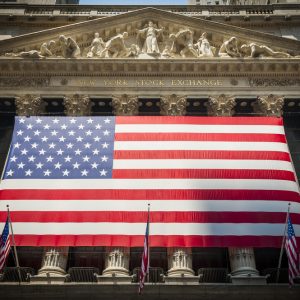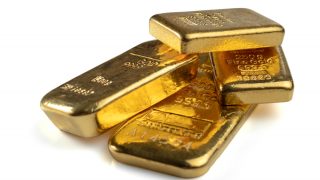Computers and information technology have changed how we buy and sell stocks.
The latest analytical capabilities and increased trade execution speed afforded by new technologies have a significant impact on trading strategies. However, the basic exchange concept remains as it was when orders were relayed by telephone and trades were executed between brokers on the trading floor.
Even though the concept of stock ownership has not changed with technological advances, the importance of understanding the modern-day process of buying and selling shares is useful for investors. Therefore, before discussing price ratios and fundamental analysis, this article will delve into what actually goes on in a contemporary stock exchange and explain what “buying a stock” really means.
To buy a share of a stock, you first must have an account with a brokerage that has the technology and relationships necessary to trade stocks. In the past, a brokerage would employ stock brokers that you could call on the phone and give your order.
These brokers also may have called you with stock tips or general financial advice. This kind of model is now known as a “full-service” brokerage, and it still exists at firms such as Morgan Stanley.
A newer model is the online-only discount brokerage, used by companies such as E*TRADE and TDAmeritrade. Discount brokerages operate more of a “self-serve” model in that they leave the customer responsible for order entry via the web, and they usually do not offer much guidance or advice from an investment professional, unlike a traditional stock broker. However, discount brokerages usually charge much lower fees for each trade than full-service brokerages.
Whether your order is entered manually via your discount brokerage’s website or relayed verbally to a full-service broker, the next step is the same. Your broker sends your order to an exchange such as the New York Stock Exchange.
What Really Happens at the Stock Exchange
The nature of what actually happens at a stock exchange has changed significantly over the past 20 years. The largest and most famous stock exchange in the United States is the New York Stock Exchange (NYSE). For most of its history, trading at the NYSE took place between human beings on an actual “exchange floor” located in downtown Manhattan.
Each brokerage firm would have to buy a “seat” at the stock exchange, which would entitle it to have its own traders or clerks present on the floor. When a customer issued an order to buy or sell shares, the firm would relay the instructions to its representative on the floor, who would be responsible for executing it or finding another trader to execute it.
To avoid having a complete madhouse, there were set “stations” of the floor devoted to trading particular stocks. At these stations, a trader known as a “specialist” would work. The specialist’s job was to facilitate an orderly market for his stock or stocks, essentially matching buyers and sellers by running a continuous auction.
Traders who wanted to buy or sell stocks would tell the specialist, who would match them with the person offering the best price on the other side of the trade, i.e., the person willing to offer the highest price if you were buying or the lowest price if you were selling. In situations where there were not enough buyers or sellers present to find a match, the specialist could also buy or sell shares out of his or her own inventory by acting as a “market maker.”
Today, most trading occurs electronically rather than on a physical exchange floor. Once you enter your order, it is automatically transferred to the exchange via your brokerage’s computer systems. The order process works much like the floor, except instead of a specialist standing at a physical location and keeping track of who is willing to buy or sell and at what prices, a computer database simply records the information and automatically matches buyers and sellers.
To visualize how this happens, we need to add one more piece to the puzzle. When you enter your order with your broker, you have a choice of how you want it to be executed. You can use a “market order,” which tells your broker you want to execute the order immediately at the best price available, or you can use a “limit order,” which tells your broker you only want to buy or sell at a particular price. For instance, if you want to buy McDonald’s shares and use a limit order with a price of $20 a share, your order will only be executed if someone is willing to sell those shares to you for $20 or less. The database (or specialist) keeps a record of all these limit orders arranged by price, as in the table below.
| Bids (Buy Orders) | Asks (Sell Orders) |
| $19.99 x 300 | $20.01 x 100 |
| $19.97 x 1,000 | $20.03 x 500 |
| $19.95 x 200 | $20.05 x 1,000 |
| $19.90 x 300 | $20.07 x 400 |
Suppose someone in the market above entered an order to “sell 300 shares at market.” The trade would immediately be executed at the price of the highest bid (buy offer) for 300 shares, or $19.99 a share. If someone entered an order to “sell 1300 shares a market,” 300 of those shares would be sold at $19.99 and 1,000 would be sold at $19.97.
With electronic exchanges, there is no “person” designated to keep track of the orders and ensure an orderly market. However, there are electronic market-making firms that make money by ensuring a liquid market.
Market makers in an electronic sense are simply traders who are willing to both buy and sell large amounts of a stock at the same time. For instance, a market maker might be willing to buy up to 5,000 shares of McDonald’s at $19.99 and sell up to 5,000 shares of McDonald’s at $20.01. By doing this, the market maker can capture the two-cent spread between the buy and the sell prices. If in one minute someone comes in and buys 500 shares at market, and in the next minute another person sells 500 shares at market, the market maker can pocket 500 x 2 cents = $10 for providing this liquidity.
The usefulness of stock exchanges
To see why stock exchanges are useful, imagine what the process of buying a stock like McDonald’s would be like without them. Stocks do not just appear out of nowhere — you would have to find someone who already owns the shares and is willing to sell them to you to complete the purchase. This would not be easy in itself.
Suppose you were lucky enough to find that your neighbor owned shares you were interested in buying and was considering selling them. Even then you still would not know a fair price to buy the shares from him. And how would you know there is not someone else in a town a few miles away that might be willing to sell you the same shares for less money?
Put in another way, though stock prices seem to appear magically out of the pages of the newspaper or the Yahoo! Finance section every day, every quote coming across the ticker actually represents a real exchange of shares for money between two consenting investors or traders. The “prices” reported are simply the prevailing prices at which these exchanges are taking place. Without stock exchanges, there would be huge costs involved with buying or selling a share, since you would have to search far and wide for the person on the other side of the trade who would give you the best price. The stock exchange provides a central place for everyone in the market to buy or sell shares with the confidence that they are always getting the best price because everyone else is there, too.
With the stock exchange typically offering an easy, safe and efficient way to trade stocks, the concern now becomes selecting stocks with the best potential for high and fast gains. However, possibilities for loss are just as available as opportunities for financial gain. Therefore, to take advantage of the market specifics, we need to be familiar with some market concepts. We will address some of these concepts – such as the Efficient Market Hypothesis – in a different article.
Billy Williams is a 25-year veteran trader and author. For a free strategy guide, “Fundamentals for the Aspiring Trader,” and to learn more about profitable trading, go to www.stockoptionsystem.com.




